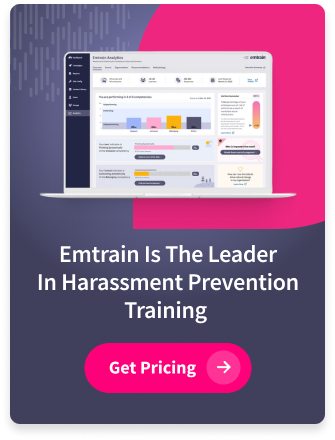That day nearly 31 years ago, a permanent imprint, began like many others: a sunny summer day that caught me, as a young associate in one of San Francisco’s nicest law firms, walking briskly around the office, efficiently tending to whatever it is young associates tend to. I recall the weight of a deadline. A legal brief; a filing. Something important. But that day unfolded far from typically. As I passed through a hallway, the intercom above me crackled, and a thin voice came over the intercom. Male, measured, and with just a hint of urgency, it announced an “emergency situation” and directed us to go to our offices and “lock the door.” I moved instantly into a nearby office, where I found myself with three coworkers. We shut the door behind us, realizing all at once that it didn’t lock; it didn’t have a lock. None of the offices on our floor did.
I remember that, well before my mind caught up, a rush of adrenaline registered my fear; the four of us moved in unison to the windows to peer for clues to what was happening. Gazing out of our glittering high rise from the 29th floor, we saw legions of emergency vehicles at the footsteps of the building. Yellow tarps for medical triage lay draped on the sidewalks, expectantly. One of my coworkers, in a flash of resourcefulness, called an acquaintance in law enforcement, who told us that a gunman was stalking the floors directly above us; deaths were confirmed on the 34th and 31st floors. At a loss for what else to do, we crouched behind a large desk in an effort to hide. We stayed there until police officers knocked loudly at our door, informing us that the “incident” was over. We learned then that, confronted by members of a SWAT team as he descended to our floor, the gunman took his own life, dying in a stairwell around the corner from where we inexpertly hid. I don’t think that anyone ever came to understand what had motivated him – a long ago prospective client of lawyers who sat in offices above ours – to enter the building with a hit list, climb on the elevator with a brief bag full of firearms, and then indiscriminately kill eight people and injure others.
This incident became known as the “101 California Street massacre,” after the building’s address, and its effects were immediate, profound, and cascading. The legal community, as much of San Francisco, reeled with grief and shock. The law firm at the center of the gunman’s grudge – an iconic firm established over 100 years earlier – disbanded a few years later, never recovering from the shooting. As a lone positive note, the incident spurred an impassioned call for responsible gun laws, including by an organization founded by members of the targeted law firm shortly after the shooting that over time has driven groundbreaking legislative changes across the country.
Reflecting back, the shooting taught me a lesson that feels painfully obvious now given the proliferation of mass killings occurring since then: that violence can happen literally anywhere, even in beautiful and peaceable places. Even in our workplaces. I also see that the incident changed the course of my work as an employment lawyer. With a new awareness and understanding of violence, I began to see the risks presented by a variety of troubling behavior that clients faced. An employee’s abusive spouse who stalked the employee at work. A fixated employee with an unrelenting grudge against their manager. A former employee who left threatening voicemails. I saw clients struggle to manage these situations. Sometimes, they misguidedly minimized safety concerns; other times, they spun into fear and confusion.
Galvanized to find a solution, or at least to help, I threw myself in the years after the 101 California shooting into developing a programmatic approach to workplace violence prevention – a system that employers could implement to bring order and structure to a messy and complex problem. Multi-disciplinary, highly collaborative, and fascinating, this work pulled me from the siloed world of private law practice into the company of local law enforcement agencies, the FBI, threat assessment psychologists, academics, domestic violence victims’ advocates, corporate security officers, and others equally committed to finding ways to prevent workplace violence – or at least to mitigate its effects. There were other important highlights to this work, but the most satisfying were testifying before Congress and chairing a national effort, organized by SHRM and ASIS International, that culminated in the first ANSI-approved American National Standard on Workplace Violence Prevention and Intervention, published in 2011.
With that personal and professional backdrop, California’s new Workplace Violence Prevention law, SB 553, feels like a full-circle moment. Here we are, at last, with a law that asks employers to implement many of the time-tested strategies promoted in the Standard. And, it emerges in a world that needs those strategies more than ever. I’ve often said that what happens “out there,” in society at large, happens “in here,” in our workplaces: problems walk straight through the door. And, right now – while, as ever, there are many forces of good – we also face rising unrest, polarization, and fanaticism; remote work that can fray the social fabric of organizations; new technologies that enable novel forms of harassment and intimidation; and a host of challenges to our collective emotional resilience. Human Resource, Compliance, Security, and in-house Employment Law leaders have a front row seat to how these problems show up in our workplaces, including in forms that threaten safety.
California’s new Workplace Violence Prevention Law remains relevant and important. And, with multitudes of employers across the state intently working to meet SB 553’s July 1 compliance deadline, I’m drawn to offer a few words of advice – and encouragement:
-
- Lean on the many resources available to help you. Unlike decades ago, multiple resources remain primed to help you implement a Workplace Violence Prevention Program and conduct related training, as CA SB 553 requires. Emtrain offers on-demand employee training compliant with the new law. Emtrain also has two Guides available: one that clearly details the new legal requirements, and another that provides a step-by-step approach to complying with the new law. As examples of additional resources, the American National Standard on Workplace Violence Prevention and Intervention, updated in 2020 to include guidance on active-shooter scenarios and available through ASIS International, provides comprehensive information and advice. Further, Cal/OSHA, charged with enforcing the new law, has published a Model Workplace Violence Prevention Plan, which some employers will find adaptable to their specific needs.
- Stay focused on the basics. While the requirements of the new law can feel daunting, they remain largely wrapped around familiar concepts: among them, the need for clearly communicated avenues for reporting concerns; the assignment of responsibilities for receiving and resolving employee reports; a general process for doing so, reduced to writing; and specific record keeping and training requirements. Many employers will find that they can expand existing systems to add the workplace violence prevention component.
- You don’t have to do it all. Employers are required to take reasonable and appropriate actions to prevent violence and manage safety concerns — within the framework of good management practices; they’re not required to step in the shoes of law enforcement or become threat assessment experts. One of the key hallmarks of a successful approach to workplace violence prevention is understanding the occasional need to engage appropriate experts in the fields of psychology and violence risk assessment, law enforcement, and security to assess and manage safety concerns. Indeed, at times, it becomes critical to do so.
- Leverage your efforts for strategic impact. As you carefully tend to SB 553’s many technical requirements, take a minute to consider the strategic impact of this work, and evangelize it. Setting up an effective Workplace Violence Prevention Program requires collaboration across multiple functions and is the ultimate team sport. Working with large employers to implement Programs, I’ve seen leaders in HR, Compliance, Legal, Security, and Health & Safety draw together, around a table, to discuss, debate, and agree on systems for dealing with some of the most concerning behavioral and security issues an employer can face. In the process, these leaders: i) broke down communication barriers that kept them ineffectively siloed; ii) came to better understand the unique skills and viewpoints they each brought to workplace problems, fostering collaboration and trust; iii) got aligned around the fundamentals of workplace safety and employee needs; and iv) exercised leadership around sensitive issues that often felt especially challenging and negative. In the process of mastering how to manage unusually complex and concerning matters, these leaders grew more adept at managing lower-level employee relations concerns. Through the training and policies they implemented, they communicated a commitment to employee safety and to a speak-up culture.Workplace violence prevention is commonly talked about in terms of “risk mitigation,” brand protection, and other traditional strategic concerns. But don’t overlook the opportunity to leverage this important work for its positive impact on important facets of company culture: leadership and the employee experience.
- Celebrate. Finally, with the hard work completed, celebrate, knowing that the effort you put into implementing a workplace violence prevention program might very well avert an incident and without question will make employees feel more secure.








